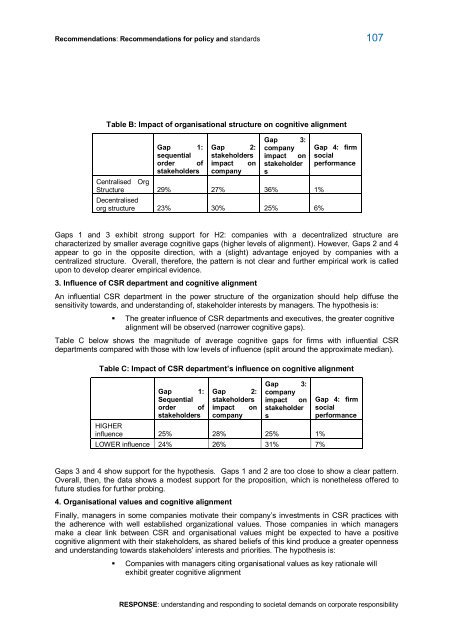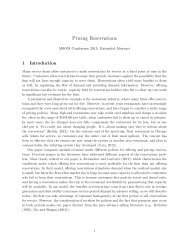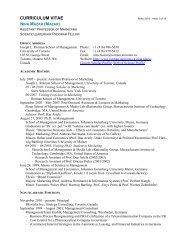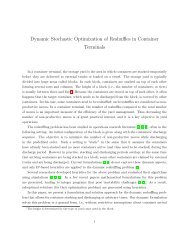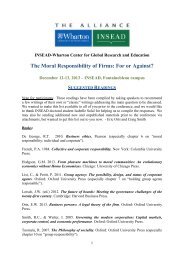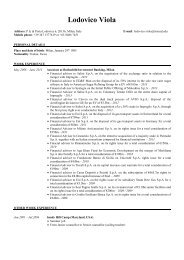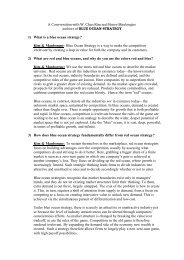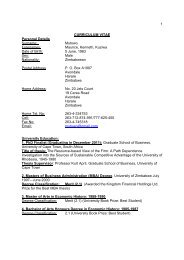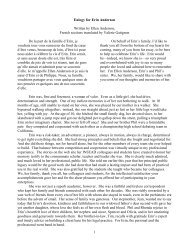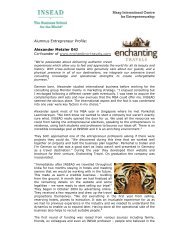RESPONSE - Insead
RESPONSE - Insead
RESPONSE - Insead
Create successful ePaper yourself
Turn your PDF publications into a flip-book with our unique Google optimized e-Paper software.
Recommendations: Recommendations for policy and standards 107<br />
Table B: Impact of organisational structure on cognitive alignment<br />
Gap 1:<br />
sequential<br />
order of<br />
stakeholders<br />
Gap 2:<br />
stakeholders<br />
impact on<br />
company<br />
Gap 3:<br />
company<br />
impact on<br />
stakeholder<br />
s<br />
Centralised Org<br />
Structure 29% 27% 36% 1%<br />
Decentralised<br />
org structure 23% 30% 25% 6%<br />
Gap 4: firm<br />
social<br />
performance<br />
Gaps 1 and 3 exhibit strong support for H2: companies with a decentralized structure are<br />
characterized by smaller average cognitive gaps (higher levels of alignment). However, Gaps 2 and 4<br />
appear to go in the opposite direction, with a (slight) advantage enjoyed by companies with a<br />
centralized structure. Overall, therefore, the pattern is not clear and further empirical work is called<br />
upon to develop clearer empirical evidence.<br />
3. Influence of CSR department and cognitive alignment<br />
An influential CSR department in the power structure of the organization should help diffuse the<br />
sensitivity towards, and understanding of, stakeholder interests by managers. The hypothesis is:<br />
The greater influence of CSR departments and executives, the greater cognitive<br />
alignment will be observed (narrower cognitive gaps).<br />
Table C below shows the magnitude of average cognitive gaps for firms with influential CSR<br />
departments compared with those with low levels of influence (split around the approximate median).<br />
Table C: Impact of CSR department’s influence on cognitive alignment<br />
Gap 1:<br />
Sequential<br />
order of<br />
stakeholders<br />
Gap 2:<br />
stakeholders<br />
impact on<br />
company<br />
Gap 3:<br />
company<br />
impact on<br />
stakeholder<br />
s<br />
HIGHER<br />
influence 25% 28% 25% 1%<br />
LOWER influence 24% 26% 31% 7%<br />
Gap 4: firm<br />
social<br />
performance<br />
Gaps 3 and 4 show support for the hypothesis. Gaps 1 and 2 are too close to show a clear pattern.<br />
Overall, then, the data shows a modest support for the proposition, which is nonetheless offered to<br />
future studies for further probing.<br />
4. Organisational values and cognitive alignment<br />
Finally, managers in some companies motivate their company’s investments in CSR practices with<br />
the adherence with well established organizational values. Those companies in which managers<br />
make a clear link between CSR and organisational values might be expected to have a positive<br />
cognitive alignment with their stakeholders, as shared beliefs of this kind produce a greater openness<br />
and understanding towards stakeholders' interests and priorities. The hypothesis is:<br />
Companies with managers citing organisational values as key rationale will<br />
exhibit greater cognitive alignment<br />
<strong>RESPONSE</strong>: understanding and responding to societal demands on corporate responsibility


